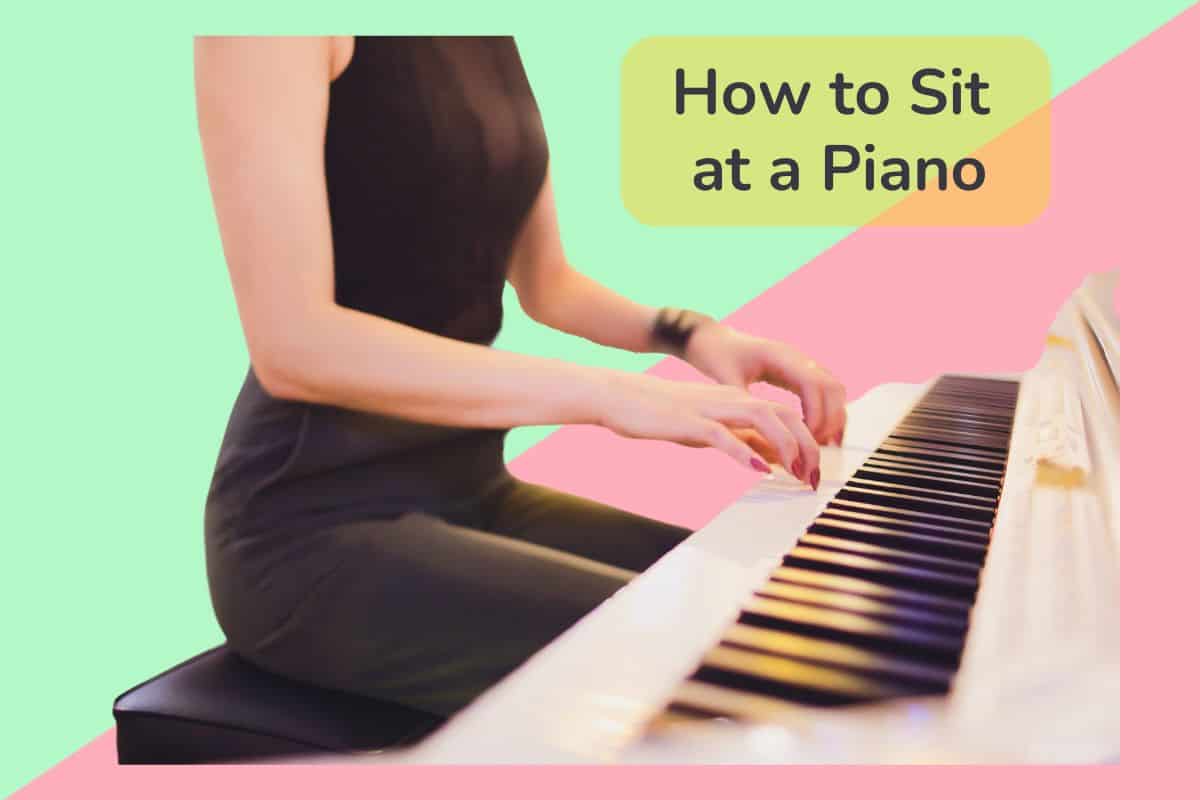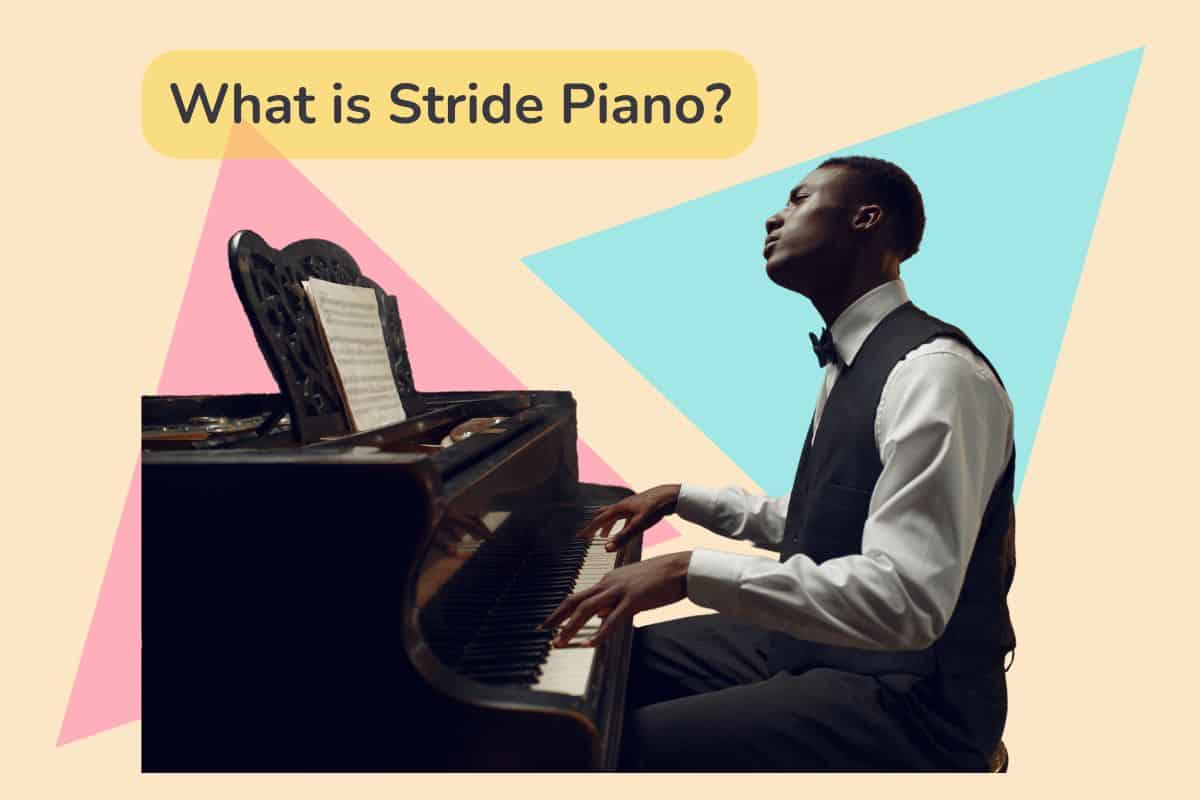When you’re learning to play the piano, where you may focus a lot on scales, chords, and arpeggios, it’s easy to overlook a fundamental aspect – how you sit at the piano. Yet, proper posture is critical. Sitting correctly enhances your playing technique and prevents unnecessary strain or injury. Proper piano posture ensures that you’re comfortable, which is essential during long practice sessions or performances.

Setting Up The Piano Area
Before you begin your practice or performance, it’s crucial to set up your piano area properly. This ensures comfort and prevents strain, so you can focus on playing with ease and precision.
Choosing the Right Bench
Your piano bench is as vital as the piano itself. Opt for an adjustable piano bench to cater to your specific height and build. This allows you to maintain a proper posture without compromising on comfort. Make sure the bench is stable and doesn’t wobble, as this could distract you during your practice.
Positioning The Piano Bench
Position your bench at a distance where your elbows are slightly more open than a right angle when your fingers are on the keys. You should sit toward the front half of the bench to have full range of motion in your arms. Your forearms should be parallel to the floor when you place your hands on the keyboard.
- Piano Bench Height: Adjust so your forearms are level with the keys.
- Distance: Leave enough space to comfortably reach all keys without over-stretching.
Keyboard and Stand Setup
If you’re using a digital piano or a keyboard, ensure the keyboard stand is stable and set at the correct height. It’s especially important to make sure the setup mimics the height of an acoustic piano to transition between the two easily.
- Keyboard Height: Aim for your keyboard to be at the same level as a traditional piano keys.
- Stand Stability: A wobbly stand can lead to uneven play or even damage to your equipment.
Fundamentals of Piano Posture
Mastering the fundamentals of piano posture is crucial for comfort and technique. Your sitting position, arm alignment, and tension control form the foundation for effective practice and performance.
Proper Seating Position
You should sit at the piano with your back straight and feet flat on the floor. Your bench height is critical and should be adjusted so that your forearms are parallel to the floor when resting on the keyboard. This height allows your elbows to fall freely from your shoulders, slightly above the keys, promoting better control and preventing strain.
Hand and Arm Placement
Your hands should be on the keyboard as if you’re holding an egg in the palm—relaxed, yet firm. Wrists should be neither too high nor too low, maintaining a natural, flat line from your forearm to hand. This hand posture is essential for minimizing tension and allowing smooth transitions and movements across the keys.
Maintaining Natural Body Alignment
Keep your neck aligned with your torso, avoiding leaning forward. Your upper back should not hunch, and shoulders must remain relaxed, without rising towards your ears. Correct body alignment helps in reducing unwanted tension, facilitates better breathing, and supports endurance during extended practice sessions.
Technique and Comfort
Adopting the correct posture and hand positioning can greatly improve both your technique and comfort at the piano. It’s important to pay attention to the nuances of your arm and hand alignment to prevent strain and injury, ensuring you can enjoy playing for longer periods.
Elbow and Forearm Technique
Your elbow and forearm should work in harmony to create fluid movements. Position your elbows so they fall freely from your shoulders; your forearms should be parallel to the floor, setting the foundation for proper technique. Adjust your seat height so your arms are at a slightly obtuse angle when your hands rest on the keys, avoiding T-rex arms or over-stretching.
Hand and Finger Position
Proper hand position is crucial for agility and precision. Keep your wrists flexible, but stable, and align your knuckles so they’re slightly curved, not collapsed. Your fingers should be curved as if holding a small ball, ensuring they can press the keys with ease and accuracy.
Minimizing Strain and Injury
Long practice sessions are less daunting when you’re comfortable. Pay close attention to any tension in your shoulders, neck, or back, and adjust your posture accordingly. The goal is to maintain good posture without stiffness; any sign of discomfort suggests it’s time to tweak your positioning.
Adjusting to Different Piano Types
Whether you’re playing a grand, upright, or digital piano, the principles of good posture remain. However, the height of your stool or chair may need to be adjusted slightly to account for the varied keyboard heights and dimensions. When transitioning to digital pianos, ensure the keys are at a standard height for a consistent technique.
Advanced Postural Considerations
To achieve perfect posture at the piano, it’s not just about sitting up straight; it’s about cultivating practices that promote a healthy range of motion and correcting subtler postural habits that might hinder your playing.
Developing Flexibility and Range
Your pursuit of perfect posture is closely tied to maintaining flexibility. As a pianist, you want to avoid stiffness, so your upper arms and shoulders can move with a fluid arc. Here’s how you can work on this area:
- Begin with dynamic stretches for your upper body to enhance movement before you play.
- Incorporate yoga or Pilates into your routine to maintain overall flexibility, which is beneficial for your posture while playing the piano.
Avoiding Common Postural Mistakes
To ensure you’re not falling into bad habits, watch out for these common errors:
- Slumping or slouching: It’s easy to let a straight back slide into a slump, especially during long sessions.
- Rigidity: Although you may try to maintain perfect posture, ensure it doesn’t lead to tension in your muscles, leading to discomfort or injury.
The specifics of proper posture go beyond simply sitting up straight; it’s a harmonious balance between correct alignment and the flexibility that allows for expression and endurance at the keyboard.



